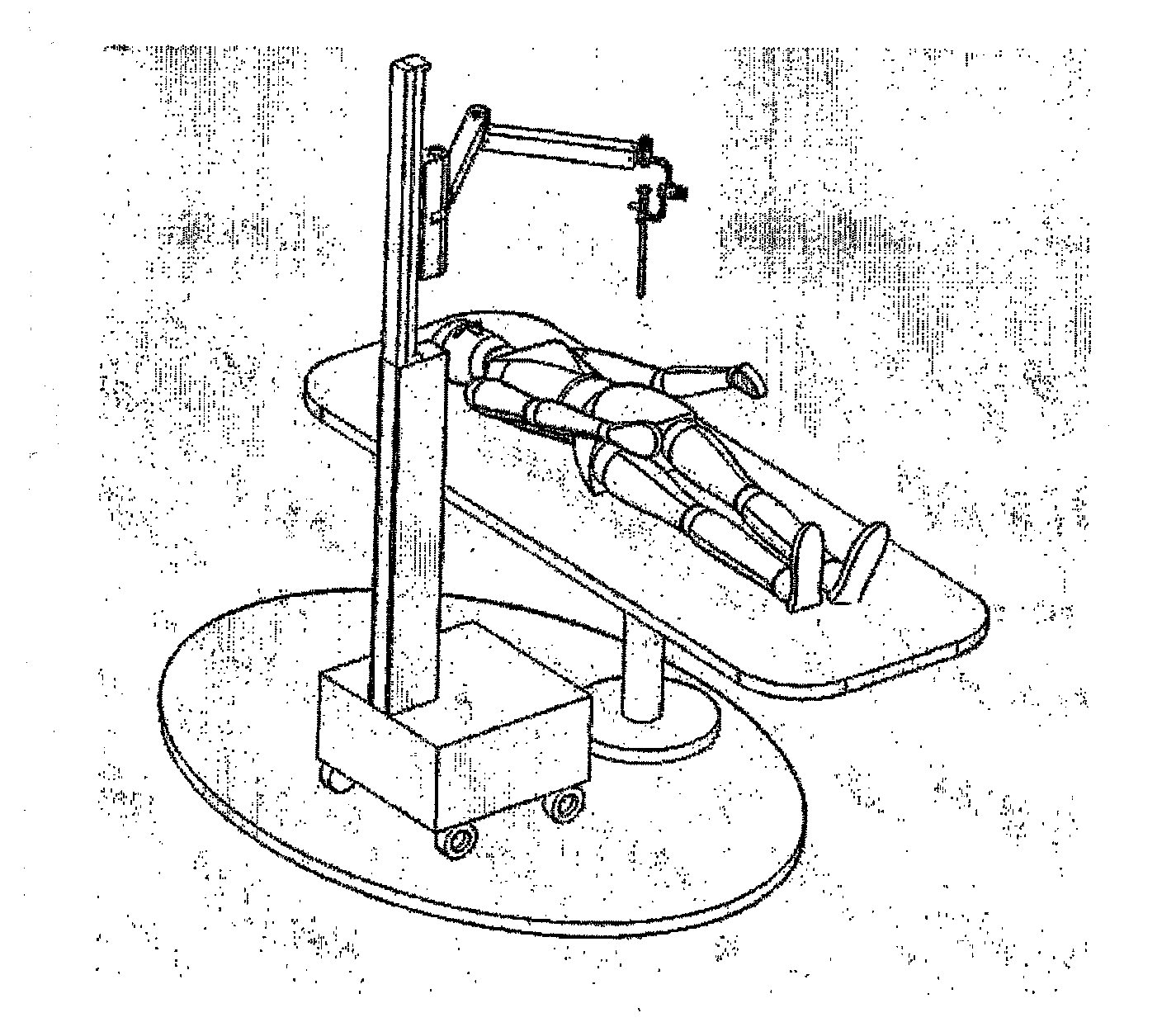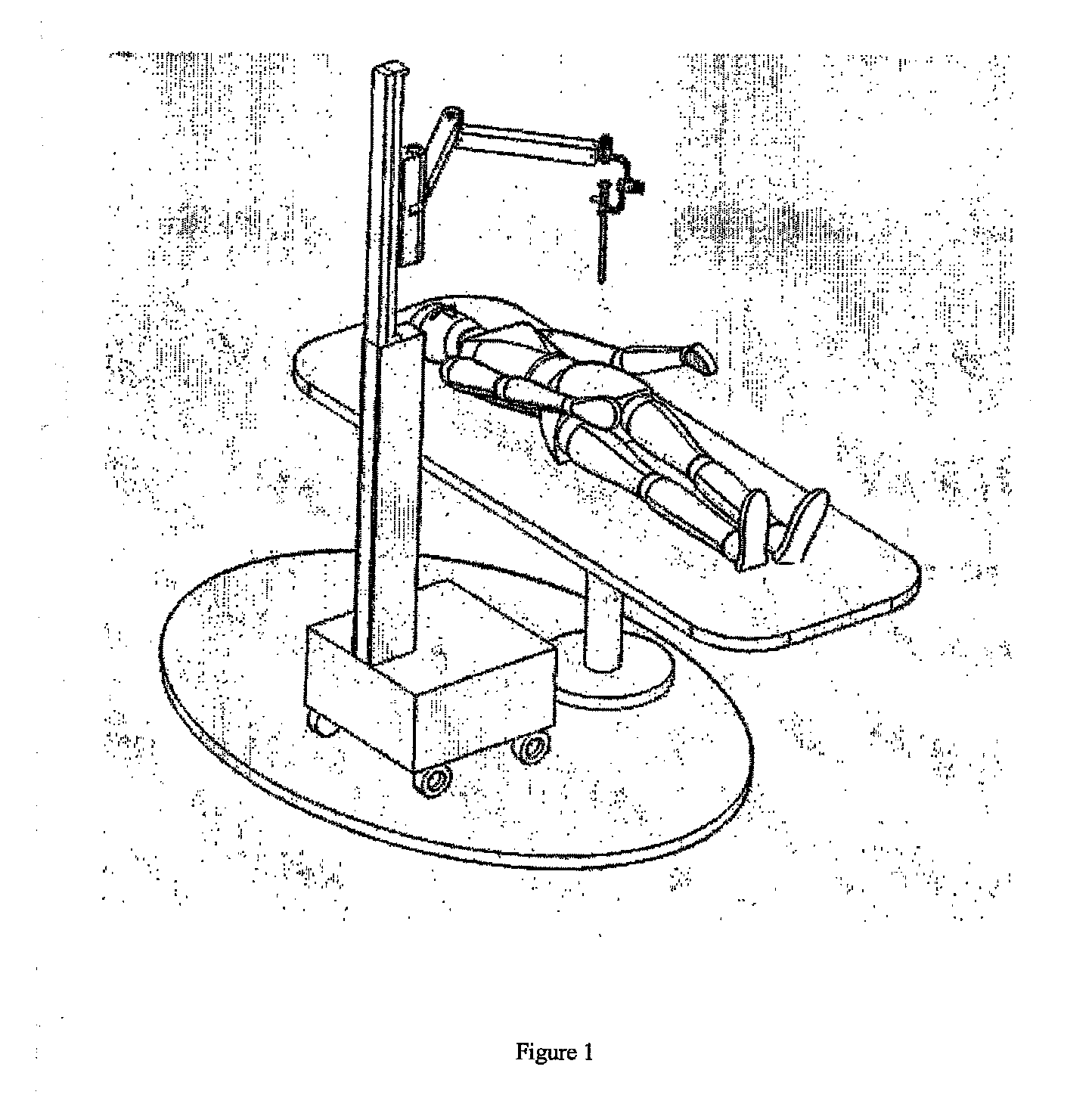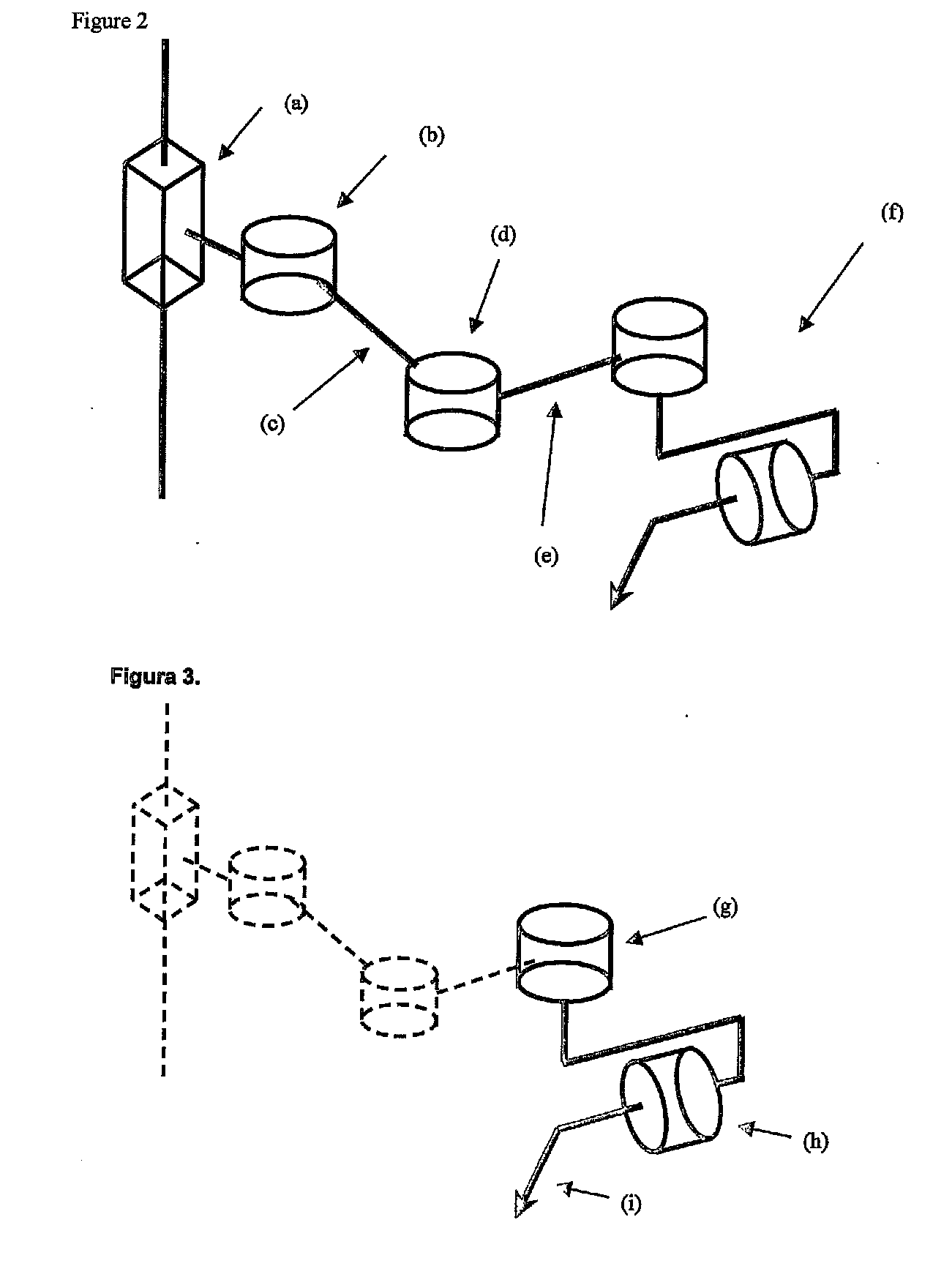Robotic system for assisting in minimally-invasive surgery, which can position a surgical instrument in response to orders from a surgeon, is not attached to the operating table and does not require pre-calibration of the insertion point
- Summary
- Abstract
- Description
- Claims
- Application Information
AI Technical Summary
Benefits of technology
Problems solved by technology
Method used
Image
Examples
Embodiment Construction
[0028]The present document describes a robotic system which enables to securely handle a laparoscopic camera in minimally-invasive surgery without physically fixing the system to the operating table or previously calibrating the insertion point of the camera in the patient's abdomen, through the general configuration of the different degrees of freedom of the robot arm, and the general configuration of the overall robotized system itself, and an appropriate method to calculate the movement which has to be given to the camera for it to reach the desired location without any need to physically fix it to the operating table or a calibration procedure before the system starts to intervene in the surgery.
[0029]The system comprises a manipulative robot with three active degrees of freedom and an end actuator with two passive degrees of freedom specially designed to hold a camera for laparoscopic surgery, a controller for the integrated robot in its structure capable of implementing a meth...
PUM
 Login to View More
Login to View More Abstract
Description
Claims
Application Information
 Login to View More
Login to View More - R&D
- Intellectual Property
- Life Sciences
- Materials
- Tech Scout
- Unparalleled Data Quality
- Higher Quality Content
- 60% Fewer Hallucinations
Browse by: Latest US Patents, China's latest patents, Technical Efficacy Thesaurus, Application Domain, Technology Topic, Popular Technical Reports.
© 2025 PatSnap. All rights reserved.Legal|Privacy policy|Modern Slavery Act Transparency Statement|Sitemap|About US| Contact US: help@patsnap.com



